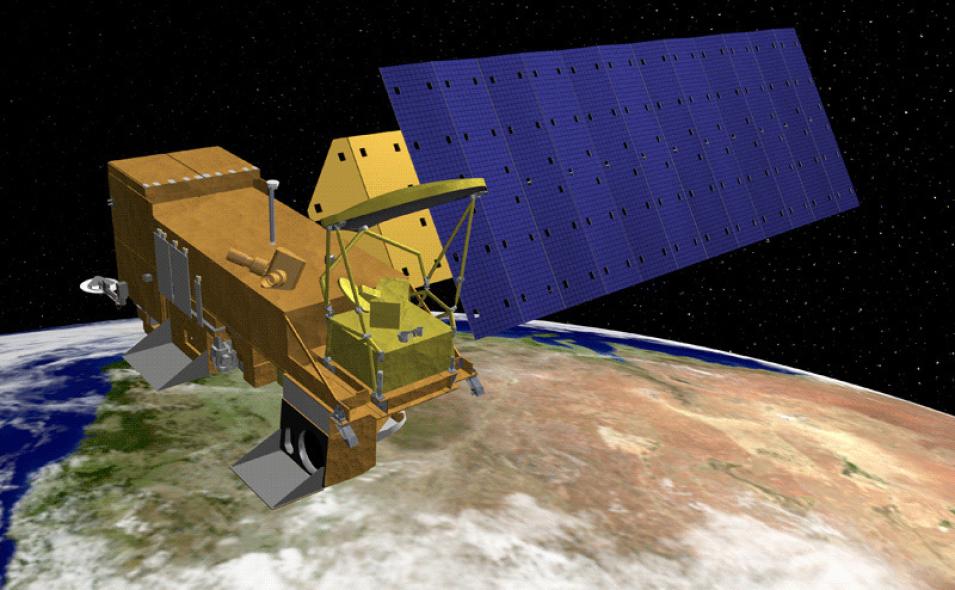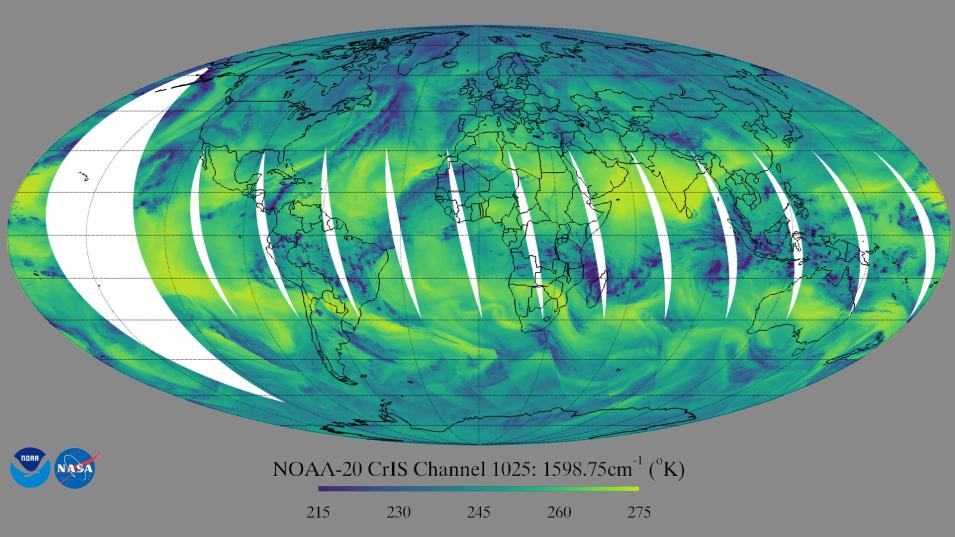In January 2022, NASA announced that, due to a limited remaining fuel supply, the Aqua satellite—the second flagship satellite of the agency’s Earth Observing System (EOS)—lowered its orbit to leave the A-Train. The A-Train is an international constellation of satellites that follow one another along the same orbital track and cross the equator at about 1:30 p.m., Mean Local Time (MLT). This means Aqua left its tightly controlled orbit and entered a free-drift mode in which its equatorial crossing time slowly gets later and later into the afternoon. By February 2023, the satellite was expected to reach, and possibly exceed, an equatorial crossing time of 1:45 p.m., MLT.
As it drifts, the instruments aboard Aqua will continue to transmit valuable data until losses of power and fuel bring an end to the mission. NASA officials estimate termination will occur in mid-to-late 2026, and when it happens those who rely on data from Aqua’s Atmospheric Infrared Sounder (AIRS) instrument will have to begin using data from its instrument follow-ons: the Cross-track Infrared Sounder (CrIS) and Advanced Technology Microwave Sounder (ATMS) aboard NASA/NOAA Joint Polar Satellite System (JPSS) satellites, the successors of the EOS missions.
Launched on May 4, 2002, along with the other instruments aboard Aqua, AIRS was designed to improve weather forecasting by providing more frequent and detailed information about the atmosphere.
AIRS probes a column of air 90 times every 2.67 seconds, or about 2.9 million times a day, from the top of the atmosphere to Earth’s surface, collecting measurements of humidity, temperature, cloud properties, and greenhouse gases with its 2,378 infrared spectral channels and 4 visible/near-infrared channels.
This wide array of channels, each associated with particular atmospheric properties or combinations of properties, and with particular heights or levels in the atmosphere, produced data that meteorologists could use to greatly improve the accuracy and vertical resolution of atmospheric profiles. The result of these improved soundings has been more reliable climate prediction and improved weather forecasts.
“AIRS revolutionized weather prediction by providing, for the first time, a three-dimensional picture of the atmosphere,” said Dr. Joao Teixeira, AIRS Science Team Leader, in an article commemorating Aqua’s 20th year in orbit. “Now there are a few infrared sounders in orbit, but AIRS still is one of the key sensors and, for the first few years, it was the only one.”
The more than two decades AIRS has been in orbit is remarkable, both in terms of its stability and for the contributions its 20-plus years of atmospheric data have made to the remote sensing and Earth science communities.

